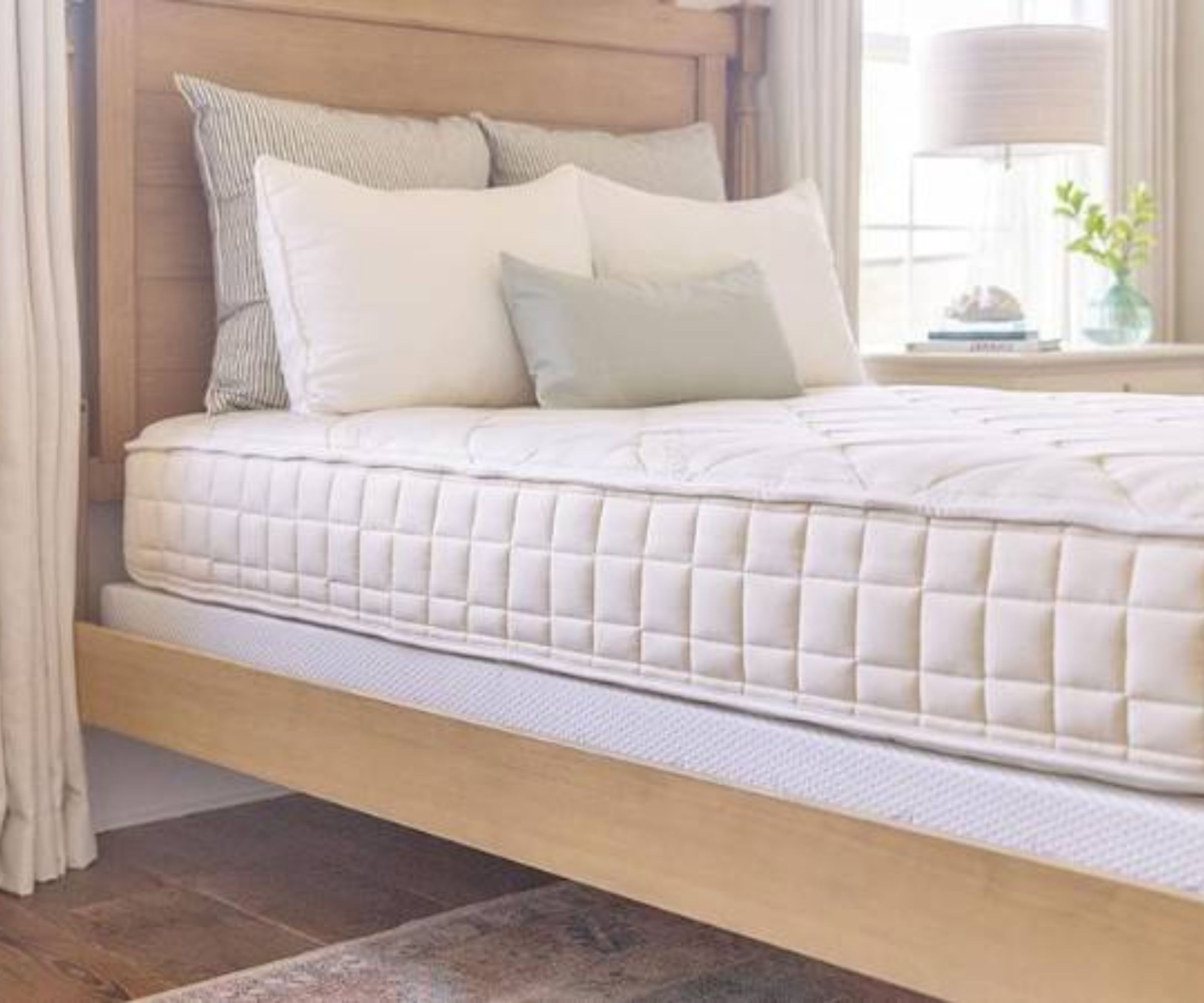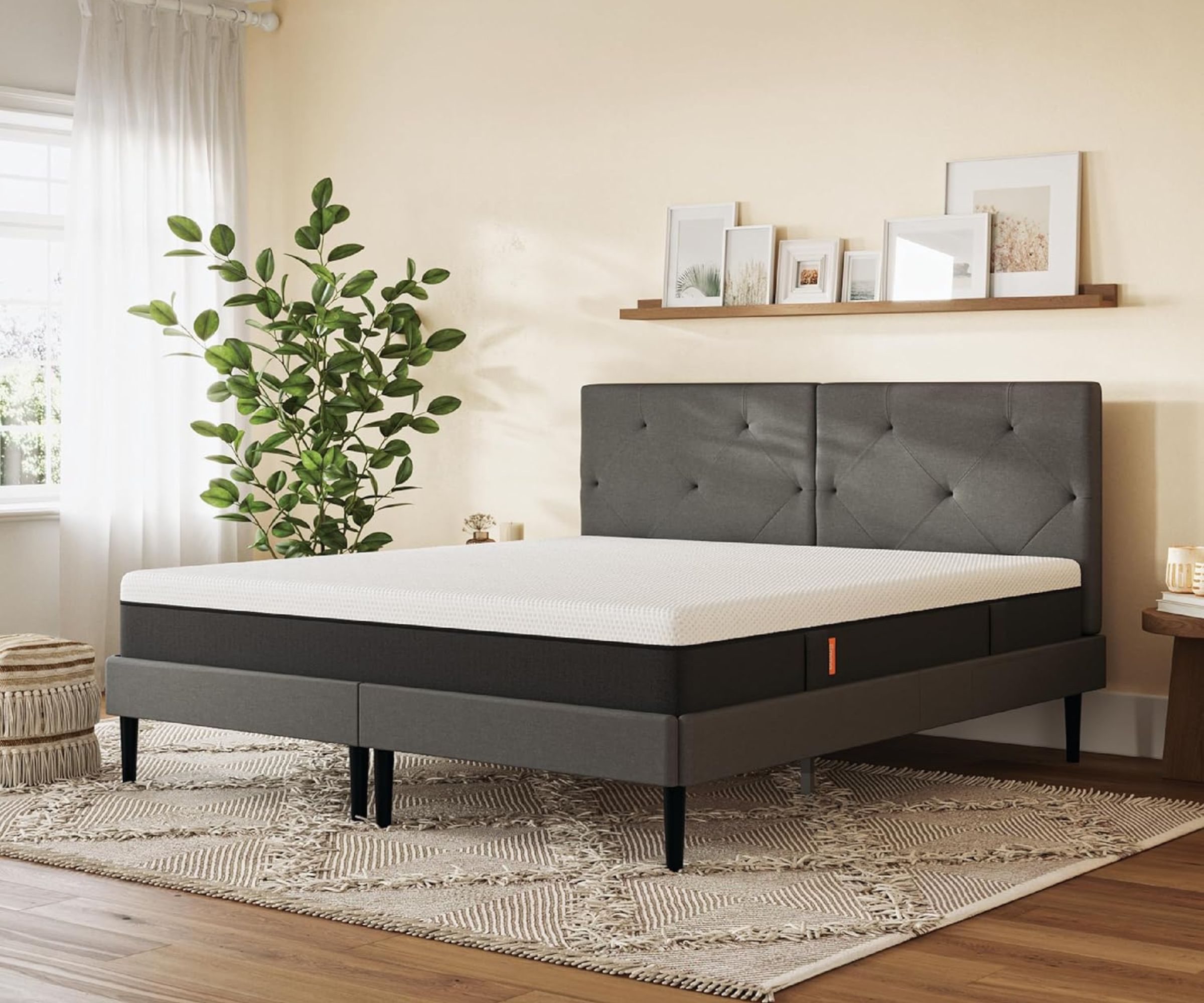How to make an uncomfortable mattress more comfy – 6 tips from a mattress tester
These are my quick hacks and easy upgrades to make an uncomfortable mattress more comfy − my favorite method is totally free


Most of us can manage one night in a bad bed. If you wake up with aches and pains from a motel mattress, or you can't get comfortable on your friend's air bed, then that isn't a cause for concern – it just means that you know what you need from a mattress, and this bed doesn't fit the bill.
If you're consistently struggling to sleep on your own mattress, that's when you know you've got a problem − when you aren't getting the support you need overnight, and you're feeling worse for wear in the mornings. While you could buy a new mattress, it will set you back hundreds, if not thousands, of dollars. Before you spend big money, it's worth trying to make your uncomfortable mattress more comfortable. Even if this is just to tide you over while you waut for your new mattress.
As H&G's resident Sleep Editor, I lead a team of expert testers in the search to find the world's best mattress. Together, we've tested some great beds, as well as some real duds. In order to get through the testing period, we've had to find ways to make those uncomfortable mattresses more comfortable, and we'd like to share our hard-won wisdom with you. There's no point suffering in silence on an uncomfortable mattress when a quick hack or an affordable upgrade could totally transform your sleep.
How to make an uncomfortable mattress more comfy
There are so many things you can do to make an uncomfortable mattress more comfy. Flipping or rotating your mattress is one quick fix, and it's totally free. Still, if you've got some cash to spare, it's worth investing in a good night's sleep. To save you time and money in your mission to makeover your mattress, I've picked out a few of my favorite products, each of which is tried and tested by an H&G sleep expert.
1. Turn your mattress

This is the quickest and easiest way to make an uncomfortable mattress more comfy. All you need is a friend or family member who's willing to help you with the heavy lifting.
'Turning' a mattress is a catch-all phrase that encompasses two maneuvers – flipping and rotating. The theory is that we tend to sleep in the same area of our mattress, night after night. This puts certain areas of the mattress under considerable strain and sometimes leads to premature aging, while other areas of the mattress look and feel as good as new. By flipping or rotating the mattress, you can get the feeling that you're sleeping in a brand-new bed without spending a cent.
Flipping a mattress only works if the internal materials of your mattress are the same on top as they are at the bottom. I learned this the hard way when I tried to flip my hybrid mattress: the supportive steel springs started digging into my stomach, and the memory foam topper gave insufficient support. I worked out that I'd get much more out of my mattress if I rotated it, instead: that way, I could keep the structure of the mattress intact.
Design expertise in your inbox – from inspiring decorating ideas and beautiful celebrity homes to practical gardening advice and shopping round-ups.
Recently, I asked a panel of mattress manufacturers: 'how often should you turn your mattress?' Their advice: roughly once every three months. A few minutes of heavy lifting once a quarter for a much more comfortable mattress: to me, that feels like a fair trade.
2. Try a mattress topper

Perhaps you've tried to flip or rotate your mattress and you haven't felt any major changes in comfort. Or, maybe, you're working with a much older mattress: you know your bed has past its prime, but you're not quite ready to throw it out. In such cases, I'd encourage you to invest in the best mattress topper.
A mattress topper could totally transform the look and feel of your mattress for a fraction of the price of a brand-new bed. You get all sorts: plush memory foam models to soften up inflexible innersprings, as well as firmer toppers to toughen up sagging mattresses. The best mattress toppers come with straps for a secure fit.
Below, you'll find a few of my favorite mattress toppers to solve common sleep problems. Here at H&G, we assess each mattress topper against the same criteria: comfort; support; cooling properties; and motion isolation. Now, comfort is such a subjective term: what feels right for me might feel totally wrong for you. That's why I've combed through our back catalog of reviews to find the most comfortable mattress toppers, according to a wide range of expert testers.

This memory foam mattress topper gets a great write-up on the Tempur-Pedic website, with more than 7,000 five-star reviews from verified shoppers. Happy customers praise the pressure-relieving properties of memory foam, though a few complain about the initial smell of the mattress off-gassing.

Threaded with cooling copper to dissipate heat, wick moisture, and block odors, I'd recommend this mattress topper for hot sleepers and summer nights. Durable and affordable, it's the best mattress topper for dorm beds, according to this recent grad.

Our expert tester, Alex, never used to see the point in mattress toppers − until she tried this plush number from Helix. As a combination sleeper, Alex switches between her stomach, back, and side, and found that the Helix Plush Mattress Topper felt comfortable in every sleep position.
3. Check your bed base

Take a step back and consider whether your mattress is actually the problem. It could be that your bed base is causing you discomfort. After all, your bed base is under significant strain from the weight of your mattress, plus the wear and tear of nightly use. Maybe your bed frame slats are splitting or your box spring coils are sagging.
If you spot a problem with your bed base, and you decide to buy another, then I'd encourage you to consider an adjustable bed. It's a great option for anyone who struggles with mobility, and needs a little help getting into and out of bed, as well as anyone who suffers from chronic pain and would benefit from a certain sleep posture.
4. Get the best bedding

Perhaps the problem with your mattress is that it tends to trap heat, so you're always waking up in a hot sweat. You could spend thousands of dollars to buy one of the best cooling mattresses – or you could save your money and buy some of the best cooling bedding.
Don't underestimate the importance of a pillow. Side sleepers need something firm and thick to prevent neck strain, while back and stomach sleepers might appreciate a flat pillow for optimal spinal alignment. An adjustable pillow, like the one below, should suit every style of sleeper, and it would work great in a guest bedroom.

I started testing these sheets in the spring, but they've really come into their own this summer. Naturally breathable and antimicrobial, these bamboo sheets are built to bust the bacteria that breeds in warm, damp environments, such as bedrooms.

As a hot sleeper who still likes a layer, I've struggled to find a cooling comforter I won't kick off during summer nights. The Buffy Cloud Comforter works for me − in particular, the eucalyptus lyocell shell helps to wick moisture and save me from night sweats.

Out of all the adjustable pillows I've tried, the Marlow Pillow is my favorite. All you need to do is push and pull the zippers to let air into and out of the pillow until it reaches your desired loft and firmness. Unlike other adjustable pillows, there isn't any surplus fluff to store or pick up off the floor.
5. Support the sagging

Over the years, your average memory foam mattress will start to sag and soften in the center. At first, you might appreciate the sinking feeling, but you'll soon notice that you're losing support. When a mattress is too soft in the middle, it can throw your hips and shoulders out of alignment and aggravate any back problems.
One quick fix is to cut a piece of plywood to fit your bed frame and slot in under your mattress. This should firm up the structure of your mattress and lend you more support where you need it most.
You could also try sleeping with a pillow between your knees to lift your hip and maintain the proper alignment of your spine. Still, this is only a temporary fix: if your mattress is starting to sag in a way that affects your comfort and support, then it's time to start looking for a new mattress.
6. Put your mattress on the floor

If your mattress is too soft, and your bed frame isn't giving you sufficient support, then you could always try putting your mattress on the floor. Hear me out: hard flooring makes a great level base for a mattress and should provide consistent, solid support from the center to the edges.
I asked my expert panel of mattress manufacturers and sleep scientists: 'should you put a mattress on the floor?' They all agreed that putting a mattress on the floor could lend support to a soft mattress, where the gaps between a slatted bed frame could create inconsistency in support.
Before you throw out your bed frame and move your mattress to the floor, I'd urge you to check your mattress warranty. Some mattress manufacturers won't allow you to make a claim unless you've been using a particular type of bed base for optimal support. In most cases, the floor won't cut it.
FAQs
How can I make a dorm mattress more comfortable?
If you buy one thing for your college bedroom, make it the best mattress topper for dorm beds. I bought a mattress topper for freshman year and I carried it across campus every time I moved. There are firm toppers to toughen up soft, sagging mattresses, as well as plush toppers for a reprieve from firm, inflexible beds.
How can I make an air mattress more comfortable?
I've written an entire article teaching you how to make an air mattress more comfortable. If you don't have time to read the whole thing, then here are the highlights.
Make sure your air mattress is fully inflated and carefully sealed before you settle down to sleep. Pick the best pillow to give your neck the best possible support. Treat your guest to the best bedding, with properly fitted sheets and a cozy blanket for cold sleepers. Situate your air mattress on a rug, rather than slick hard floors, to prevent squeaking and sliding.
Final thoughts
If you've tried some or all of these tips, and you still can't get comfortable, then the problem might not be your mattress. Even the best mattress can't cure chronic pain: that's the sort of thing you should take up with a medical professional, rather than a mattress manufacturer.

Emilia is our resident sleep writer. She spends her days tracking down the lowest prices on the best mattresses and bedding and spends her nights testing them out from the comfort of her own home. Emilia leads a team of testers across America to find the best mattress for every sleep style, body type, and budget.
Emilia's quest to learn how to sleep better takes her all around the world, from the 3Z mattress factory in Glendale, Arizona to the Hästens headquarters in Köping, Sweden. She's interviewed luxury bedding designers at Shleep and Pure Parima, as well as the Design Manager at IKEA. Before she joined Homes & Gardens, Emilia studied English at the University of Oxford.